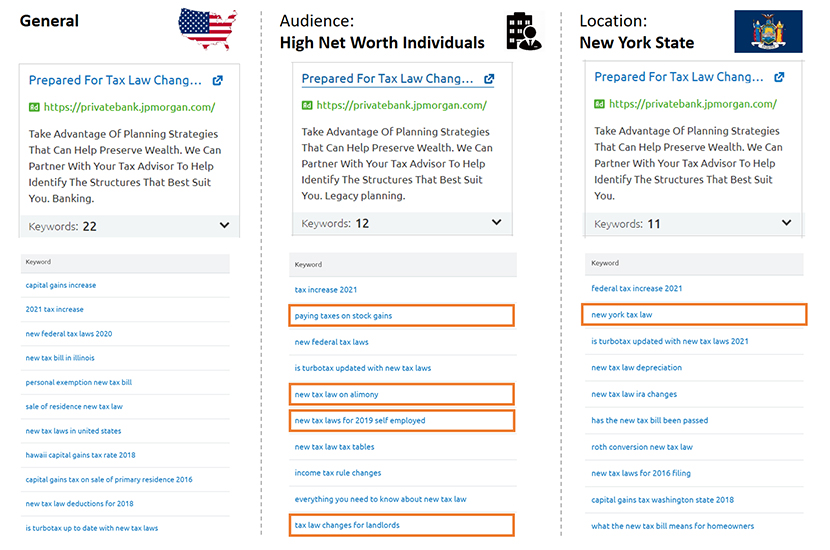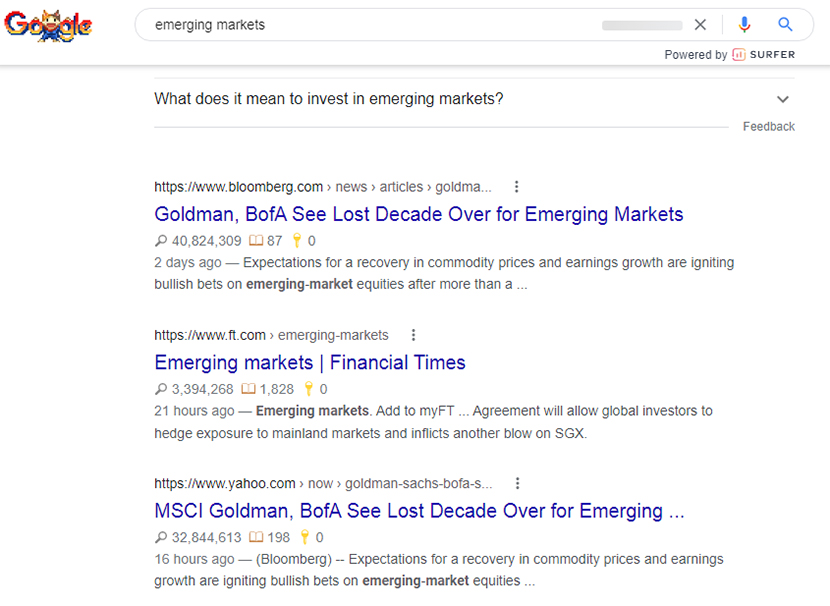Published on August 9, 2022 by Dilakshi Wijesinghe
With the recent shift from traditional marketing avenues to digital marketing platforms, asset managers have been able to streamline their business and expand their presence to newer audiences including the younger generations. With this growing interest in new audience segments and methods of advertising, asset management needs to be reshaped if it is to increase visibility; companies would need to use digital channels familiar to such audiences while incorporating digital marketing trends and best practices within regulatory boundaries. Such digital marketing efforts can be categorised as paid advertising and unpaid advertising.
Paid advertising is the main method of advertising in digital marketing, where online marketers pay advertising platforms such as Google Ads, LinkedIn Campaign Manager and Twitter Advertising to promote their content and ad creatives to a selected audience. The two most popular paid advertising strategies are pay per click (PPC) and pay per impression (PPM). The PPC advertising strategy allows the advertiser to bid for ad placement on a search engine or social media platform with a sponsored link that will appear when a user searches for similar content; here, the advertiser intends to gain of acquiring highest number of link clicks. The PPM advertising strategy allows the advertiser to bid for ad placement on a search engine or social media platform with sponsored content that will be displayed to users searching for similar content; here, the advertiser intends to gain the highest number of views. At the other end of the spectrum of online marketing, companies and marketers post and host their content on business pages and forums to keep their closed community updated and engaged with business ventures without sponsoring while relying heavily on the content’s ability to go “viral” on its own – this is known as unpaid advertising. While paid advertising relies mainly on the concept of paying for the right engagement by leveraging a selected marketing medium such as search engine advertising, social media advertising and email marketing, unpaid advertising relies on the concept of organic social buzz with online communities through avenues such as social media conversations, forums, blogs and news articles.
Paid online advertising methods such as PPC advertising and social media advertising (e.g., LinkedIn, Twitter and Facebook) provide the opportunity to track campaigns for each paid advertising effort by using a set of “tags” to add campaign information, advertising source and medium and type of content in use to assess the return on investment (ROI) and evaluate the success of each strategy. If a campaign is not performing well, the additional information tracked using tags would provide the insights required to make the crucial decision of pausing or discontinuing the campaign-specific marketing efforts and reallocating remaining budgets to a better-performing campaign. This would provide the ability and flexibility to optimise marketing efforts instantly. The marketing team would be able to manipulate sources and the volume of traffic gained through targeting audience segments with personalised ad content, ad imagery, and landing pages with customised bidding to surpass the competition for similar ad targeting and ad placements requests by competitors. The quality of visitors to the website could be controlled based on competitor demand for ad placements, the popularity of selected keywords and interest groups.
The success of a campaign could, therefore, be measured in a very short period of time – from a few hours to a couple of days. However, once the campaign is paused or ended, the brand would no longer benefit from the traffic it received when the campaign was active.
The following is an example of how JP Morgan personalised ad content and keywords of its search campaign to increase lead generation by using the momentum gained by changes in US tax law for private bankers.

Source: SEMRush
In contrast, search engine optimisation (SEO), as part of pai advertising, could be daunting for busy financial marketers; this is mainly because it takes a long time – from two months to one year – to see actual results.

Unlike with PPC advertising, asset management marketers would not have control over their audience or how their promotional material, website content and other non-paid PR efforts perform on search engines. As there is no monetary exchange for the gain in traffic, SEO will perform based solely on user interest, quality of content, quality of the website and adherence to search engine guidelines, and how well content/keywords match user requirements and surpass competitors’ competencies. The key ingredient of a successful SEO campaign is understanding the visitor’s intent and expectations, and producing rich and engaging content to cater to their needs.
How best to use SEO/paid advertising
Before engaging in any SEO or PPC activity, marketers should review and assess how they measure up against their competitors. This would help determine and build marketing strategy to surpass the competition and streamline the work needing to be done. Most asset managers have fairly unique investment products, presenting a good opportunity to optimise unique brand content to surpass the competition.
Identifying key pages on the website that help generate leads (e.g., fund pages, document downloads, contact/meeting requests, subscriptions, half-filled forms and preference centres) would help the asset management marketer determine a potential customer’s intentions and requirements. Based on customer intention and information expected from a key page, marketers could embed keywords used by potential visitors to search landing-page content and add them as meta keywords to each landing page (e.g., a mutual fund’s landing page could contain the following keywords: high-return mutual funds, investment model mitigate fund loss and dividend-paying securities). Through this, target audiences that search for services provided by the company without using brand-related terms would be able to easily find the company’s business landing page among the search results. By performing a quick search on a preferred search engine (e.g., Google) using these identified keywords and phrases, marketers would be able to see first-hand the placement of the website or the performance of a paid ad on a search results page.
One of the main strategies that would impact the Google algorithm, common to both paid advertising and SEO, is producing and marketing content that caters to the interests of target audience segments. For example, if an asset manager’s primary investment products are in emerging markets, the brand’s thought-leadership and other insight content should include many long-tail keywords relating to the topic of emerging markets.
The performance of paid advertising campaigns and SEO rankings could be used to measure the quality of content of the related ad or the landing page and overall website hygiene. Hence, it is important to use target keywords in ad creatives and webpage content as frequently (and strategically) as possible.
Another main strategy would be building off-site backlinks and increasing the pool of referral traffic. Backlinks represent the “vote of confidence” from one website or digital media to the brand’s website; this plays a significant role not only in SEO domain ranking, but also when advertising via ad platforms. If many digital media sources drive traffic to the same website or page, search engines infer that the content is worthy of linking, resulting in a higher rank on the search engine results page (SERP). However, earning backlinks from referral media can be time-consuming. To accelerate the process and maintain brand visibility, asset managers could use corporate social media profiles to share infographics, images and blog content linked to relevant alter tags and link it to the website page. Using email marketing, asset managers can share the pitch not only with the potential blog providers to feature the content on third-party blogs, but also with existing and prospective clients. Supplementing paid adverting, social media marketing and email marketing strategies with blog featuring would increase the credibility of backlinks and enhance brand visibility.
On the surface, while SEO and PPC advertising seem to be very different modalities, they should, in reality, be considered as two halves of a bigger picture we could refer to as “search engine marketing”. By approaching SEO and PPC as an integrated process, rather than in isolation, asset management’s digital unified marketing efforts could elevate the performance of each marketing mechanism and achieve each of their ultimate business goals.
Why integrate SEO and PPC in the marketing process?
Data is the life of digital marketing efforts, and without access to the “right data”, both PPC and SEO marketing efforts would fail. With the help of data provided by global search engines such as Google, AOL, Yahoo, the individual web analytics platforms of search engines and key performance indicators (KPIs), marketers would have access to data on user behaviour.

By analysing performance data based on an objective, marketers could make predictions and alter/optimise efforts accordingly. Although PPC and SEO advertising need to be approached differently, data obtained from these processes could be used to enhance the performance of each process.
Asset management marketing would most often have separate teams to manage SEO and PPC, as each team requires significant skill in and knowledge of their respective disciplines. Shared data would bridge the communication gap between these two teams to provide answers to the important questions that arise when evaluating the performance of each of these marketing efforts. Key questions include the following:
-
Does the audience engage with the content?
-
What are the digital touchpoints of users who engage with the content, and what is their contribution?
-
What is the contribution of each marketing effort across the stages of the marketing funnel?
-
Which type of content performs the best based off of pre-set marketing measurement framework?
-
How long does it take to nurture a lead at each stage of the user funnel formulated on pre-set marketing measurement framework?
-
What is the best marketing mix to optimise the customer journey?
This integration would create a hyper-connected digital ecosystem so asset managers could thrive amid the current challenges. However, it is also a necessity, if a company is to compete with brands that may have implemented a more unified approach. Therefore, integration of these two marketing strategies has become a prerequisite for maximising brand visibility, awareness and acquiring more sales-qualified-leads (SQLs) at a lower acquisition cost and generating higher ROI.
A marketing strategy that integrates SEO and PPC would enable a brand to leverage valuable data to enhance brand engagement with digital audiences, close gaps in keywords, engage with potential customers and conquer the competition.
How Acuity Knowledge Partners can help
We at Acuity Knowledge Partners ensure success by helping our clients to gain a competitive advantage by providing the best services through our in-house industry experts with years of experience to advise and continuously working with multiple client teams across the sales cycle to ensure maximum growth and increase market opportunities.
By providing a holistic approach to unifying all digital marketing efforts, we help to accelerate the process of our client sales and marketing teams turning leads into customers. Through our deep domain expertise in digital advertising, web & data analytics and SEO for financial services, we are able to improve brand digital footprint throughout their user journey, quality of the website and performance, and user engagement with brand content by personalization of digital marketing efforts to meet user expectations helping our clients to increase their brand visibility and improve lead convertibility.
Sources:
Wouter Kritzinger and Melius Weideman (2013). Search Engine Optimization and Pay-per-Click Marketing Strategies. [online] ResearchGate. Available at: https://www.researchgate.net/publication/263227263_Search_Engine_Optimization_and_Pay-per-Click_Marketing_Strategies.
McGinley, C. (n.d.). SEO vs. PPC: When to Optimize and When to Pay for Traffic. [online] blog.hubspot.com. Available at: https://blog.hubspot.com/marketing/tabid/6307/bid/1514/paid-search-vs-organic-search.aspx.
Baker, L. (2022). Where To Invest In SEO For Maximum Impact. [online] Search Engine Journal. Available at: https://www.searchenginejournal.com/the-epic-rise-of-seo-how-why-and-where-to-make-an-investment/194215/
Tags:
What's your view?
About the Author
Dilakshi Wijesinghe is a Delivery Lead within Fund Marketing Services vertical at Acuity Knowledge Partners and has over 8 years of experience in digital marketing, Search Engine Optimization & data analytics. She has experience creating digital marketing strategies using market insights, competitive intelligence, SEO & web analysis, digital advertising, and similar assignments for our FMS clients. Her previous experience includes tenures with startups, advertising agencies, and corporates, where she focused on paid advertising, SEO, web and data analytics, as well as growth hacking and autonomous product development.
Like the way we think?
Next time we post something new, we'll send it to your inbox








